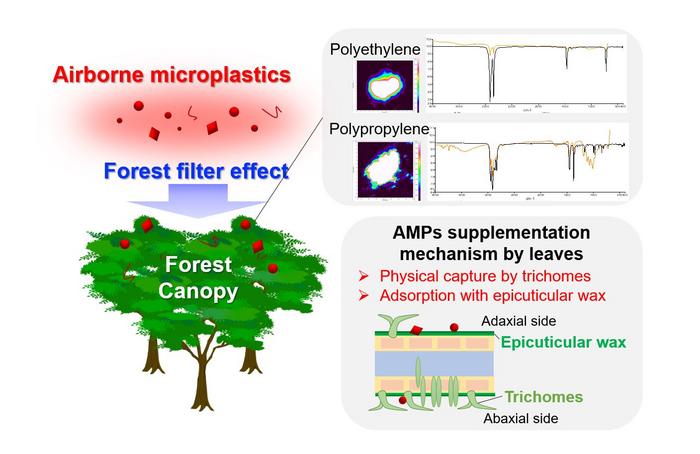Making rubbery materials that can take a beating without losing their bounce
DURHAM, N.C. — When it comes to the environmental impacts of cars, much ink has been spilled on tailpipe emissions. But there’s another environmental threat from cars you might not think about: microplastic pollution. Credit: Please credit Stephen Craig, Duke University DURHAM, N.C. — When it comes to the environmental impacts of cars, much ink […]

DURHAM, N.C. — When it comes to the environmental impacts of cars, much ink has been spilled on tailpipe emissions. But there’s another environmental threat from cars you might not think about: microplastic pollution.

Credit: Please credit Stephen Craig, Duke University
DURHAM, N.C. — When it comes to the environmental impacts of cars, much ink has been spilled on tailpipe emissions. But there’s another environmental threat from cars you might not think about: microplastic pollution.
Car tires are made of rubber but also plastic polymers and other materials. Tiny bits of these materials, most a fraction the size of a grain of sand, slough off whenever tires rub against the road. Some are washed into soils and waterways; others enter the air, where their long-term effects on the health of humans and other living things are unknown.
Duke chemistry professor Stephen Craig thinks we can do better. In a study published June 22 in the journal Science, he and colleagues describe a way to make rubbery materials an order of magnitude tougher, without compromising other aspects of their performance.
Craig is part of a team from Duke and MIT that has been studying the molecular reactions within a class of flexible polymer-based materials called elastomers. Think rubber tires, the nitrile in medical gloves, or the silicone in soft contact lenses. What makes these materials amazing is the fact that they can be stretched and squished repeatedly and still return to their original shape.
But they’re not indestructible. Enough strain and they begin to crack. Most methods to make such materials more durable invariably involve a trade-off, Craig said: Greater toughness for less elasticity, for example.
The new study suggests it doesn’t always have to be a compromise. The secret lies in weak bonds embedded within the material that actually make it stronger.
Zoom in close enough, and elastomers essentially look like a jumble of loosely coiled strings or strands of spaghetti. Each strand is a long, chain-like molecule called a polymer, with covalent bonds called cross-links holding neighboring strands together.
It’s the cross-links that help such materials hold their shape. Pulling on the material stretches the tangled polymer chains and makes them straight. Let it go, and they relax back into their more coiled and bunched-up state.
For the new study, the team’s idea was to tie some of the polymer chains together using weak cross-links that are designed to break.
In their work, the researchers designed and synthesized two identical elastomers composed of polyacrylate, a rubbery polymer used to make things like hoses, seals and gaskets. Then in one of them, they replaced the cross-links with ones that were five times weaker, due to an embedded molecule that breaks apart under strain — in this case a ring-shaped molecule called cyclobutane.
Everything else being equal, Craig said, you’d think that “linkers that break more easily should produce materials that are easier to tear.”
But instead they found the opposite. “Surprisingly, the overall network got much stronger as opposed to weaker,” he added.
In mechanical tests, the researchers loaded thin sheets of each material into a machine that measures the force it takes to rip a sample.
Both were similar in terms of stiffness and elasticity, but the one made with weak cross-linkers was up to nine times more difficult to tear than the one cross-linked with stronger bonds.
“The toughness enhancement comes without any other significant change in physical properties, at least that we can measure, and it is brought about through the replacement of only a small fraction of the overall material,” Craig said.
Tearing in a polymer material is essentially a chemical reaction, said first author Shu Wang, who did the work as part of his Ph.D. dissertation under Craig and Duke polymer theorist Michael Rubinstein.
Typically, the polymer strands that span the leading edge of the tear must break for the crack to spread.
But in their design the weak cross-links break first, leaving the main polymer thread uncinched but otherwise intact. This helps the material resist breaking down further, even once small nicks and blemishes start to form.
The team has filed a patent on the approach. Much work remains to be done to use the insights to design tougher synthetic rubber like that found in tires, Craig said.
“But that’s the long-term application I’m most excited about.”
Previous studies estimate that, each year, tires release some 6 million metric tons of dust and debris worldwide, accounting for as much as 10% of the microplastics that end up in the oceans, and 3-7% of the particulate matter in the air we breathe.
“That’s just from tire tread wearing down on roads,” Craig said. “If you could reduce that by even 10%, that’s still 600,000 tons of microplastics you’d be keeping out of the environment.”
“So I’m really excited to see how these kinds of ideas might translate to that problem,” Craig said.
This research was supported by the Center for the Chemistry of Molecularly Optimized Networks, or MONET, which is funded by the National Science Foundation (CHE-2116298).
CITATION: “Facile Mechanochemical Cycloreversion of Polymer Cross-Linkers Enhances Tear Resistance,” Shu Wang, Yixin Hu, Tatiana B. Kouznetsova, Liel Sapir, Danyang Chen, Abraham Herzog-Arbeitman, Jeremiah A. Johnson, Michael Rubinstein, Stephen L. Craig. Science, June 23, 2023. DOI: 10.1126/science.adg3229
Journal
Science
DOI
10.1126/science.adg3229
Method of Research
Experimental study
Subject of Research
Not applicable
Article Title
Facile Mechanochemical Cycloreversion of Polymer Cross-Linkers Enhances Tear Resistance
Article Publication Date
22-Jun-2023
What's Your Reaction?

































